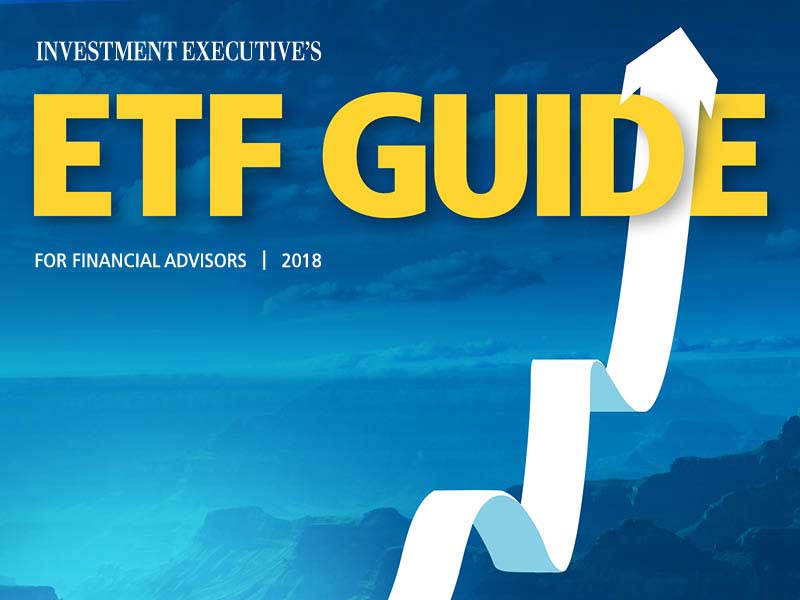
Although the ETF space has grown rapidly over the past several years, the benefits of a ballooning product universe can be dwarfed by the associated challenges and negatives. Being aware of the pitfalls – some of which should sound very familiar – can help to tilt the odds of success in your clients’ favour.
I began writing about ETFs around 2000. There were no ETF analysts reviewing Canadian ETFs at that time because they would’ve been as busy as the old repairman in the Maytag ad; there were maybe two dozen ETFs trading in Canada back then. Accordingly, Canada had no “ETF industry.” Product growth was gradual in the 2000s.
Almost nine years later – with global stock markets near their global financial-crisis lows – there were about 80 ETFs listed on the Toronto Stock Exchange (TSX). That was more than sufficient to build a low-cost passive portfolio. I wrote back then that the dizzying array of specialty products was beginning to become a problem. Although I knew this problem would worsen, I’m still struck by the ETF industry’s product proliferation.
Fast-forward another nine years and we now have north of 600 ETFs trading on the TSX. Unfortunately, the gimmicky products that I have seen in more mature product segments, such as mutual funds and U.S. ETFs, have now fully penetrated Canada’s ETF market.
Don’t get me wrong. Choice is great. However, there’s an abundance of research confirming two negative outcomes for people making decisions in the face of abundant choice: people have a tougher time making a decision; and when they do make a choice, they tend to be less satisfied with their decisions.
American psychologist and author Barry Schwartz wrote a whole book on this subject entitled The Paradox of Choice, in which he recounts many studies and experiments. Poor outcomes of decision-making in a crowded marketplace were observed in everything from jam to investments. This resonated with me, given that I have observed similarly poor outcomes for investors during most of my career.
In the late 1990s, I was part of a team that calculated estimated dollar- weighted returns for all investors in all Canadian mutual funds and segregated funds covering roughly a decade. I carried on with this work on my own for the next decade. From late 1993 through mid-2008, I estimated that investors in equity funds in Canada did not enjoy any of the equities-related risk premium available in stock markets during the same period.
The factors that eroded returns were largely fees, poor timing and the active-management dilution of holding too many products. But an investment product universe that multiplies like rabbits will suffer from all three of these performance-hindering factors. In other words, ETFs have adopted all of the mutual fund industry’s bad habits.
Extended bull markets – like those we saw in the 1990s or in the past nine years – are like fertilizer to investment products. The larger the product universe, the more likely we are to see increased specialty and narrowly focused products. And those products tend to be more expensive and more volatile. Higher costs, trendiness and higher volatility is the same destructive combination that robbed investors of all the equity premium before the financial crisis really took hold.
But there is a way to wade through the ever-growing list of products successfully. The solution starts with making sure you have a set of clear investment beliefs, from which all of your investment activities flow. You then need a disciplined process for portfolio design and construction.
Much like many of us advocating the use of investment policy statements to guide the ongoing management of client portfolios, you must always refer back to your philosophy and process to avoid being overly seduced by a new product, strategy or firm. For example, our firm receives phone calls and emails pitching new products several times weekly. It’s easy to be swayed by the many interesting products we’ve seen, but we always take a step back and ask ourselves key fundamental questions.
Step 1 in effective client portfolio performance is determining if your clients’ current portfolios are meeting their goals – and if you can reasonably expect them to do so going forward. If there is a gap, identifying the cause will be helpful. For example, although chronically low bond yields have risen lately, they’ve been a challenge for many.
The potential solution to any gap that exists between portfolio performance and goals (and risk parameters) also should be fleshed out in a more generic context. This will help clients stay focused on fundamentals and not be drawn off course by any one product’s alluring pitch.
The potential damage resulting from a product universe riddled with gimmicky strategies is very real. And in what may be a lower-return future, avoiding those pitfalls will do you and your clients a big favour.
Dan Hallett, CFA, CFP, is vice president and principal with Oakville, Ont.-based HighView Financial Group, which designs portfolio solutions for affluent families and institutions.